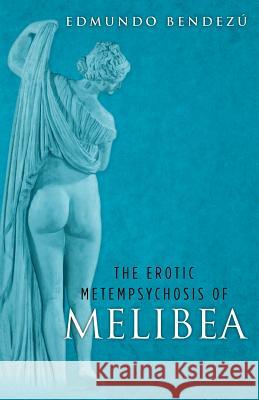The Erotic Metempsychosis of Melibea » książka
The Erotic Metempsychosis of Melibea
ISBN-13: 9781480085541 / Angielski / Miękka / 2012 / 534 str.
Calisto Gavilan experiences an extraordinary vision, late one night in an Indian shaman's hut, high in the Peruvian Andes. Nearly asleep, he sees in the flame of an oil lamp, a fleeting vision of eight women who, according to his mule driver, he must have known and loved in his former lives. Calisto decides to search for those women in their present, youthful reincarnations. He cannot find them in Peru, and the muleteer advises him to look for them in far-away lands. Calisto travels to Europe to study the history of Spain and to write his graduate thesis about the Spanish conquest of the Americas. European and Spanish history appear to him as a continuum resulting in the creation of Peru. Calisto reconstructs the prehistoric migrations of the Celts and Iberians; the Carthaginian, Roman, Goth, and Arab wars of conquest in Spain; and the wars of succession between the medieval kingdoms of Castile and Portugal, from which emerged the Spain of the discovery and conquest of America. The historical reconstructions take the form of narratives in which, in one form or another, appear the women of Calisto's vision. In this respect, "The Erotic Metempsychosis of Melibea" is a historical novel about Spain's pre-history and medieval age. Calisto's sister suggests the name Melibea as the unifying image of Calisto's visions. His reading of "La Celestina" proposes a different interpretation of Fernando de Rojas's tragicomedy. Melibea is the symbol of a complete love, both spiritual and sexual. The erotic element is basic to "The Erotic Metempsychosis of Melibea." The perfect woman is inaccessible; on the other hand, the real woman finds in the erotic her reason for living. Calisto's trip to Greece is the culminating point of his encounter with Europe, in the cradle of Occidental civilization. He discovers the significance of the Parthenon and the cult of Athena; he comes to understand the mystery of the cure in Aesculapius's sanctuary at Epidaurus; he views a presentation of Aeschylus's "Agamemnon" during the festival of classic Greek theater at Epidaurus; the re-translation of Aeschylus's tragedy holds a mesmerizing beauty and allows the reader to see the mechanisms for the presentation of drama in the open air theater, with its chorus, the Coryphaeus, and the actors as they were probably done in ancient Greece. The novel concludes with Calisto's return to Peru and to Yanacocha, the place of his original vision."











